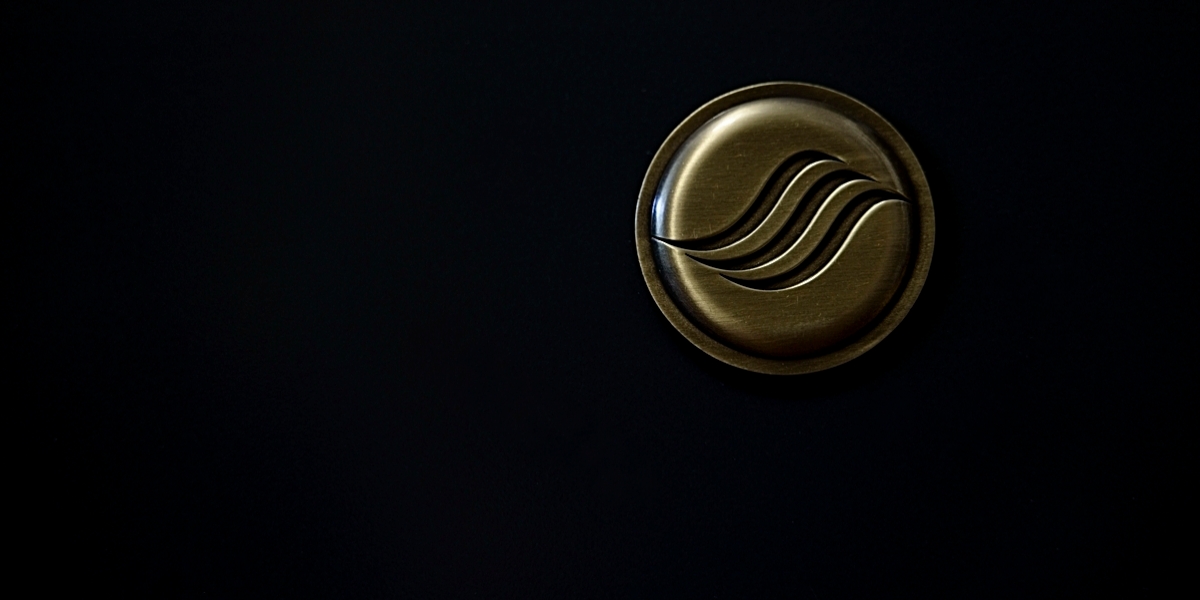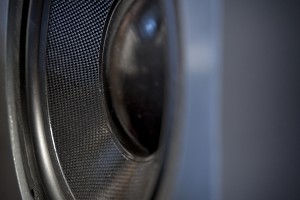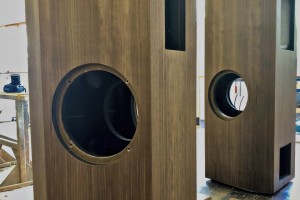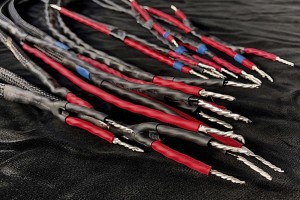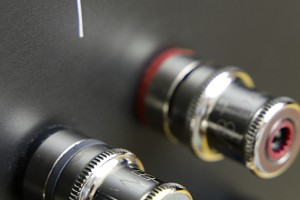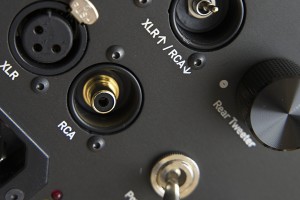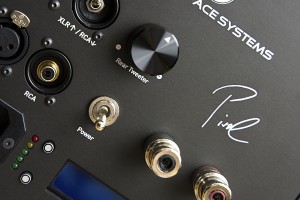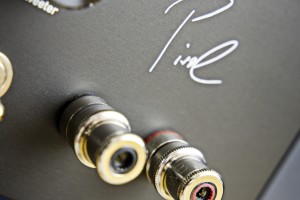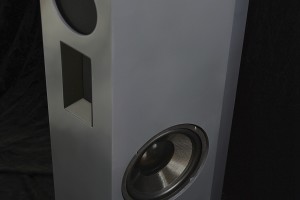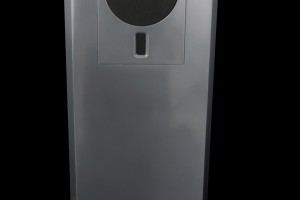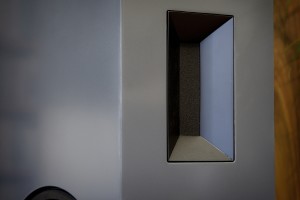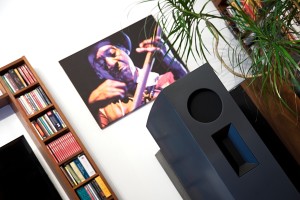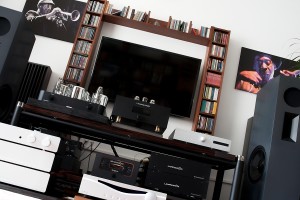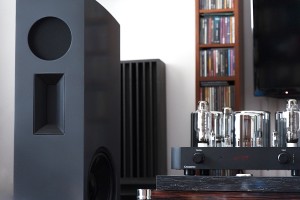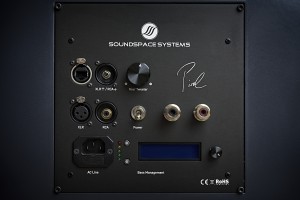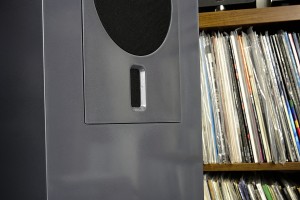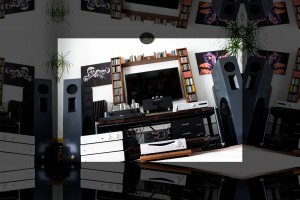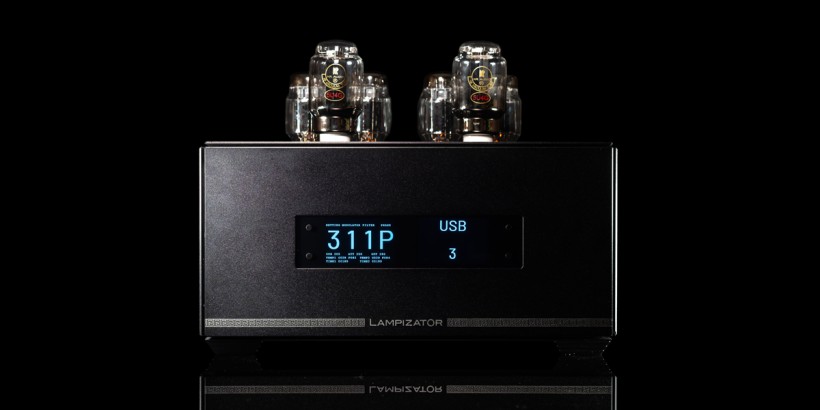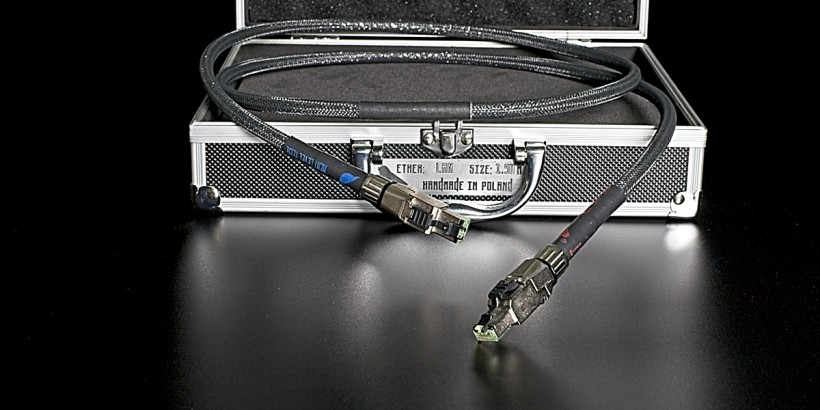It’s not everyday that I receive a proposition to review loudspeakers from a 50+ kEUR price range. I did review some, but not that many of these. The main reason is quite down-to-earth one, namely: logistics. Such expensive speakers tend to be big and heavy so getting them to my place is simply a challenge. This time it did happen with SoundSpace Systems Pirols. So let me introduce you to these remarkable speakers.
Introduction
Every year I spend three days in Munich during the High End Show. There are always some pre-arranged meeting, some friends that I have a chance to see just this once a year and some interesting presentations I try to get to (assuming crowd is not too big and I can get in). Even though it is a busy trip each time I also try to cut out some time just to wonder around in the MOC halls in a hope of stumbling across some new (at least for me), interesting brands or products. This year I stumbled across the presentation of the Acoustical Systems brand. This is a German manufacturer of brilliant tonearms (and some other vinyl-related products) that I knew. Right next it there was yet another booth and I decided to walk into it. At this moment it was not particularly crowded, which is a good thing if you want to have a chance to listen to the presentation in piece and quiet. Inside I saw quite big, impressive speakers. Huge woofers on sides and AMT tweeters immediately caught my eye, plus music was being played from vinyl records. That already would have been enough to keep me in the room for a while but since despite room’s questionable acoustic conditions also the sound seemed really good I had no choice but to stay for a while. I’d never heard of this brand before but I learned they came from Berlin and offered (for the moment) two models of semi-active speakers. Despite the fact that the room contributed strongly to less-then-perfect bass performance, the sound was captivating. It was open, as I like to say – full of air, with a rich, resolving midrange and vibrant, yet smooth treble. I quickly gathered that it was a surprisingly natural, highly enjoyable presentation and even the bass showed a lot of potential despite „hostile” environment. Plus, the man running presentation instead of sampler records played real music – jazz, rock, classic, obviously choosing what he liked instead of concentrating at some super-duper audiophile releases that his speakers could in theory benefit from (or at least many other exhibitors seem to believe that). That’s w topic for another time, but I really wish more exhibitors would use same music as we listen to at homes, which is to say not only the best releases of the best recordings available.
That already would have been enough to keep me in the room for a while but since despite room’s questionable acoustic conditions also the sound seemed really good I had no choice but to stay for a while. I’d never heard of this brand before but I learned they came from Berlin and offered (for the moment) two models of semi-active speakers. Despite the fact that the room contributed strongly to less-then-perfect bass performance, the sound was captivating. It was open, as I like to say – full of air, with a rich, resolving midrange and vibrant, yet smooth treble. I quickly gathered that it was a surprisingly natural, highly enjoyable presentation and even the bass showed a lot of potential despite „hostile” environment. Plus, the man running presentation instead of sampler records played real music – jazz, rock, classic, obviously choosing what he liked instead of concentrating at some super-duper audiophile releases that his speakers could in theory benefit from (or at least many other exhibitors seem to believe that). That’s w topic for another time, but I really wish more exhibitors would use same music as we listen to at homes, which is to say not only the best releases of the best recordings available.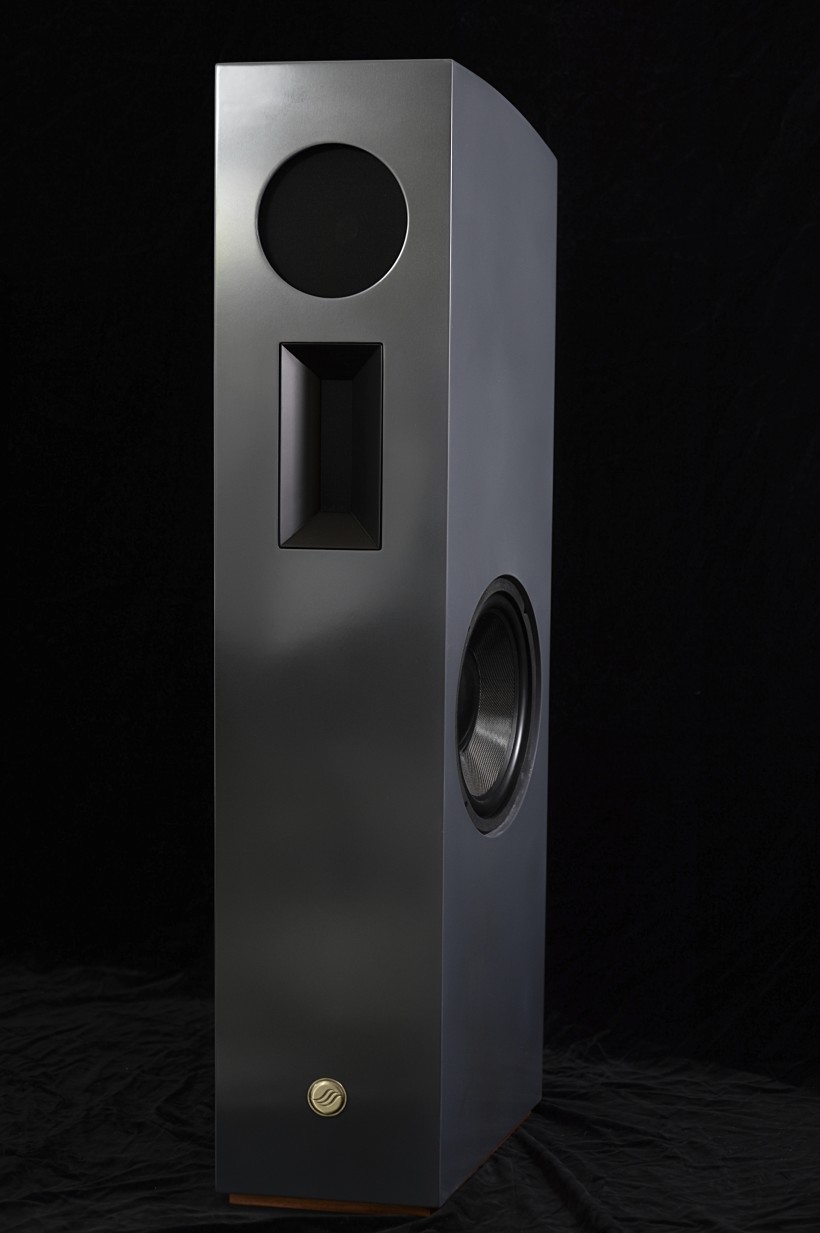 The guy presenting speakers turned out to be the head of the company, Dr. Michael Plessmann and the brand’s name was SoundSpace Systems. As it turned out he was actually a friend of Mr. Dietrich Brakemeier from Acoustical Systems. The later with his speakers actually inspired Michael, a man holding a doctorate in physics, to undertake a project of developing his own dreamed speakers. He told me he actually started to build speakers as a teenager, but only recently, since 2017, he turned it into his job. Since, as he told me, he didn’t have to make a living from it, he could take his time and hold off presentation of his achievements until he was truly ready, that is until High Show in Munich A.D. 2019. We kept talking for a while and I had a sense, that our, say, vision, of what the good sound is, or what we expect from audio system, was quite similar. As that was my impression from the listening session as well, I was convinced that his loudspeakers were worth getting to know better. Plus, I am a sucker for products from small or boutique manufacturers, as they (I mean the best of them) tend to offer amazing products. They also seem to be more customer-oriented, which people who are not fond of mass-products can really appreciate.
The guy presenting speakers turned out to be the head of the company, Dr. Michael Plessmann and the brand’s name was SoundSpace Systems. As it turned out he was actually a friend of Mr. Dietrich Brakemeier from Acoustical Systems. The later with his speakers actually inspired Michael, a man holding a doctorate in physics, to undertake a project of developing his own dreamed speakers. He told me he actually started to build speakers as a teenager, but only recently, since 2017, he turned it into his job. Since, as he told me, he didn’t have to make a living from it, he could take his time and hold off presentation of his achievements until he was truly ready, that is until High Show in Munich A.D. 2019. We kept talking for a while and I had a sense, that our, say, vision, of what the good sound is, or what we expect from audio system, was quite similar. As that was my impression from the listening session as well, I was convinced that his loudspeakers were worth getting to know better. Plus, I am a sucker for products from small or boutique manufacturers, as they (I mean the best of them) tend to offer amazing products. They also seem to be more customer-oriented, which people who are not fond of mass-products can really appreciate.
I also learned from the brochure, that the model that sounded so well there, the top one called Aidoni, weighted over 300kg a piece and the other, smaller one, Pirol, „only” 100kg. The conclusion for me was simple – these seemed to be really interesting speakers but a chance of manufacturer being willing to deliver them to my place for a review was close to zero. But it is always nice to meet a true passionate and fruits of his/her passion so the visit to the room was definitely worth it. When I stepped outside the booth I talked also to two people working for Michael. To my surprise they turned out to be my countryman. As it turned out it was not to be the last time I met them all.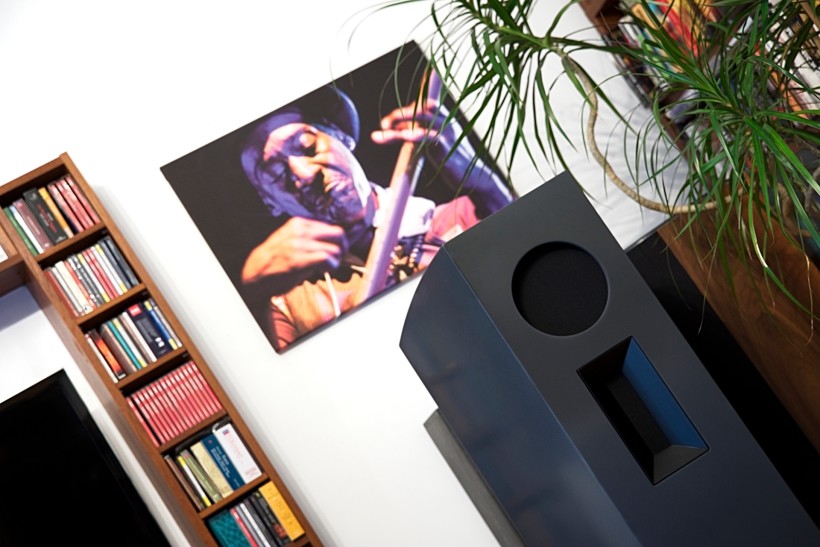 For several months all the SoundSpace Systems speakers were for me was just one of the nicest memories from the High End Show 2019. And then one day my phone rang and I learned that Michael was ready to deliver Pirols for a review. He was about to bring personally a sold pair to Warsaw to a customer and wanted to take a second pair with him to leave it with me. He intended to later pick it up for the Audio Video Show in Warsaw (Nov. 8-10th) that he would be participating in. That’s a clue for you – you don’t need to believe my opinion regarding Pirols but if you’re coming to the AVS to Warsaw find Soundspace Systems’ room in Sobieski Hotel and give them a chance yourselves.
For several months all the SoundSpace Systems speakers were for me was just one of the nicest memories from the High End Show 2019. And then one day my phone rang and I learned that Michael was ready to deliver Pirols for a review. He was about to bring personally a sold pair to Warsaw to a customer and wanted to take a second pair with him to leave it with me. He intended to later pick it up for the Audio Video Show in Warsaw (Nov. 8-10th) that he would be participating in. That’s a clue for you – you don’t need to believe my opinion regarding Pirols but if you’re coming to the AVS to Warsaw find Soundspace Systems’ room in Sobieski Hotel and give them a chance yourselves. That’s the man himself. Obviously apart from music we also share love for mountain hiking.
That’s the man himself. Obviously apart from music we also share love for mountain hiking.
There was no way I could have refused the offer to review Pirols. I was pretty sure that in a decent acoustic environment of my room these heavy-weight beasts would really shine and provide me with some unique musical experience. But it was still not the end of the offer. Michael’s idea was for me to first come to his place in Berlin, listen to both models in his system, his room, and only then to review Pirols any way I wanted to. Since it’s just a short trip from Warsaw to Berlin I gladly accepted. We met and spent a whole day at Michael actual house so I didn’t take any photos there to respect his privacy. But it gave me a chance to listen to the speakers in a much larger room than mine, to try and comprehend the whole designers vision of how these two models should sound like and to learn a bit about Michael. He spent part of his life in New York, also several years in South Africa, so he’s seen life from different perspectives and he’s soaked with various cultures and music from around the globe. That’s my guess, but I think it helped him while developing speakers and tuning them so that they would be capable of playing every music genre one might throw at them. Including „real” music, not just the best audiophile releases.
And that’s exactly what we did choosing numerous records from Michael’s impressive vinyl collection. We listened to classic music, jazz, blues, rock, electronic, even pop to experience full potential of both Michael’s speakers. There were some relatively new releases and some older than any of us. We used mostly Aidoni, but at some point we switched to Pirols for comparison and for me to get the feeling of how the smaller model sounded like compared to bigger ones in a quite large room. The former obviously offered even higher level of performance, one that many even most demanding music lovers could probably eagerly spend their lives with, but the latter sounded quite similar in terms of general sonic character. The larger speakers (in a at least 100 sqm room) outperformed the smaller model mostly in such aspects of the sound as scale, momentum, dynamics (to some extend), resolution and bass extension. They were better, no doubts, but, especially in a smaller room, like 25-40 sqm, I bet Pirols would be a smarter choice, and not only because of significant price difference. The Aidoni simply need a lot of space to fully spread their wings so in some cases Pirols could be a better choice also performance-wise. While being there I also had a chance to have a look at the workshop where crossovers for both models were soldered right in front of my eyes. As Michael says, they are one of the critical elements of the whole design hence premium grade elements and meticulous assembly are key for achieving intended performance. It was an interesting day and I must say that I definitely liked this way of kicking off the review. I could do that more often, in case you (other manufacturers) are wondering… 
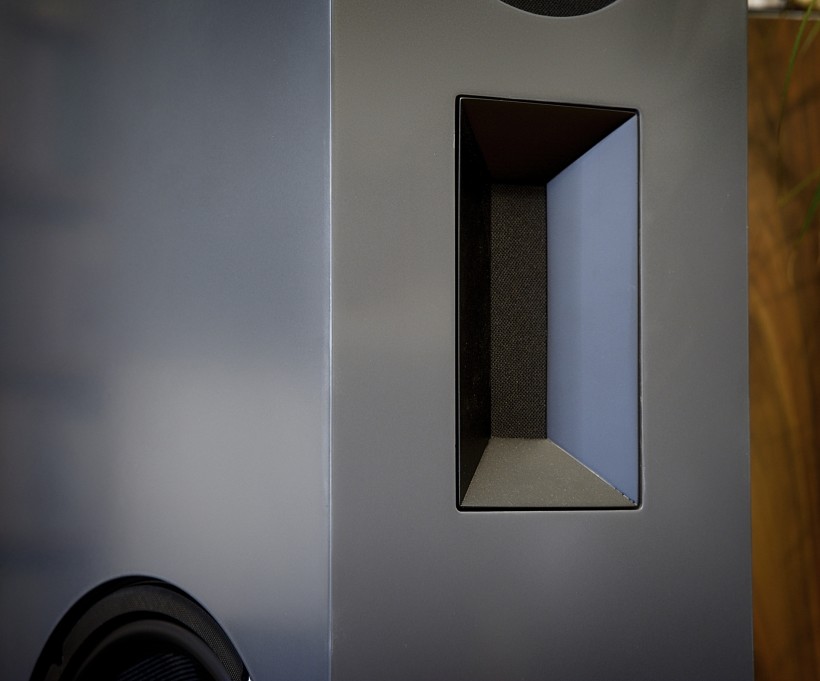
Design
Let’s have the designer explain details of his design:
Pirol is a floor-standing 3-way loudspeaker incorporating state-of-the-art technology in all dimensions. It is technically and shape-wise designed for perfect harmony and integrity. Its underlying technology effortlessly creates sound pressure levels above 110 dBs without any strain or signs of power compression but also does not loose the composure and envelopment of music at 60dBs. This performance is also a result of its foundation – the cabinet. The cabinet is a triple layer composite, centered around a bamboo core that builds up the woofer compartment and also the frame system for the upper frequencies. The inside is a ceramic shell that ensures unwanted resonances. The outer shell can be chosen individually from Piano Black or other colors, up to Leather applications or solid African teak. The entire cabinet is resting either on solid wood or solid bronze for a perfect grounding.
Pirol’s high frequency reproduction comes from a Neodynium driven AMT with a diaphragm area larger than 6.000 sqmm. It is supported by an adjustable rear ribbon tweeter. The midrange is an open baffle design. An exponential paper cone driver which goes all the way down to 100 Hz with ease. The efficiency of this passive section rates at 97 dB/W/m. The crossover is a 1st order design. The low frequencies are recreated from two 12 inch carbon fiber drivers per channel in a closed chamber. They are set up for impulse compensation and are driven by an integrated 500 W class D amplifier. The DSP based low pass is adjustable and also first order. It matches the phase linearity of the overall crossover topology seamlessly.
The final touch in terms of perfect sound reproduction is coming from Pirol’s internal wiring. Every cable connection is individually designed and the geometry is hand woven in Germany either in solid core copper or silver labeling depending on the chosen model.
The overall appearance is shaped to avoid any standing waves and follows strictly Feng Shui principles and applies the Golden Ratio. The Golden Ratio can be found in nature, galaxies, artwork, architecture, literature, and many other areas. Leonardo Da Vinci, for example, perfected its use in every single painting he did. It is the secret to aesthetics. Feng Shui is concerned with order, balance and the harmony of heaven and earth. The combination of both leads back to the magic of music in order to enhance your life by bringing it into harmony and balance with its surroundings.
Let me add, that the pair that was delivered for a review was a Basic version with wooden base and with Silver option which includes internal wiring from hand woven solid core silver cables, all passive cross over components in silver/gold foil and WBT silver speaker terminals.
Sound
I know that the introductory part was a bit long – I just thought that a unique approach to the review proposed by Michael and what I got out of it was worth describing. Now, let’s finally get to the point – how do Pirols sound like? If you managed to stay with me until now you may already have a sense of what was the goal for these speakers. The intention was always to offer listeners a highly musical, immersive, real-like experience. It was never about the best bass performance, most tangible midrange, or breath-taking treble but about a musical performance as a whole presented in a very accurate and natural way. A relaxed, though highly energetic, highly resolving, though incredibly liquid, fast but smooth, detailed by coherent one. The very essence of Pirol’s performance is music and enjoyment and satisfaction that come from it. And that was my feeling most of the time I spent with them no matter what amplifiers and sources I combined German speakers with or what music genres I explored. If you wanted a short version of the review – this is it. For those who like to know more let me elaborate a bit.
Two weeks or so after my visit to Berlin Michael and Mr. Jacek came to Warsaw and brought a pair of 100+ kg Pirols with them. They had a sort of stairs-self-climbing cart so they didn’t even really sweat while bringing the speakers to my 3-rd floor apartment. The initial setup didn’t take much time and then we could spend a few hours listening to them together. First thing I noticed, even though we used a relatively inexpensive solid-state amplifier, the Struss Audio DM-250, was improved sense of space. That was actually the only reservation I had while visiting Michael in Berlin. I missed some depth to the soundstage there, more tangible, precisely placed phantom images. I know that not everybody cares for these features but I do and I told Michael so. Remembering that I noticed the change almost immediately. After I did, Michael confirmed that he had heard me in Berlin and he had tuned the speakers, mostly DSP, accordingly. That’s what I call a high quality service – one asks and one shall receive 
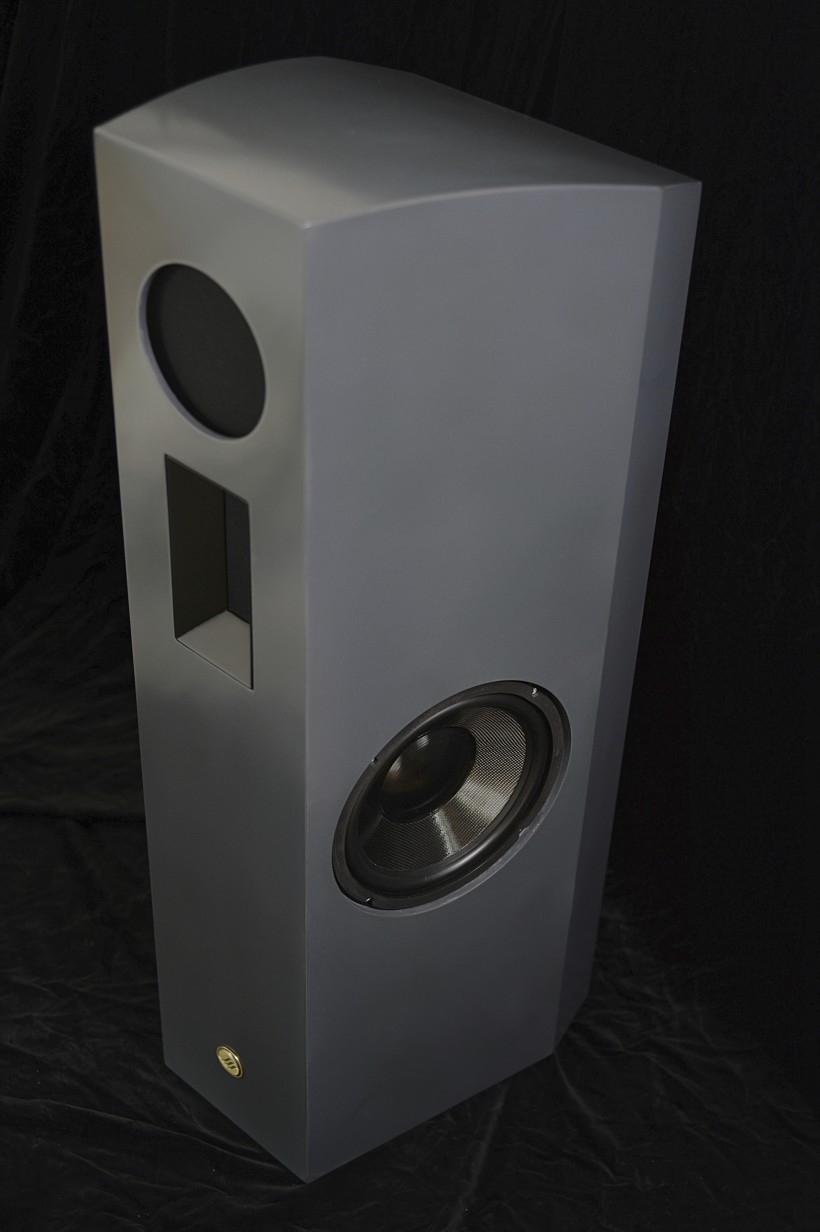 By the way, using active bass section and DSP allows (manufacturer, not necessarily a user) to adjust the sound of Pirols to user’s room and/or taste. That’s one of the advantages of this type of design. As I’ve mentioned many times before I am not a bass-junky, meaning I can appreciate high quality of the lower part of the band, but it is not what I primarily look for in any audio component’s performance. It seems that Michael agrees so despite almost unlimited capabilities of Pirols in this regard he made sure bass would never dominate the upper part of the band. It’s there, it is powerful, taut, fast when needed, but it stays in its role as a sort of foundation for a midrange (and treble). Still, how much bass you get is adjustable, so those who like more of it can get it. In other words, no matter what your preferences are after some adjustments bass performance of Pirols should be one of their powerful quality.
By the way, using active bass section and DSP allows (manufacturer, not necessarily a user) to adjust the sound of Pirols to user’s room and/or taste. That’s one of the advantages of this type of design. As I’ve mentioned many times before I am not a bass-junky, meaning I can appreciate high quality of the lower part of the band, but it is not what I primarily look for in any audio component’s performance. It seems that Michael agrees so despite almost unlimited capabilities of Pirols in this regard he made sure bass would never dominate the upper part of the band. It’s there, it is powerful, taut, fast when needed, but it stays in its role as a sort of foundation for a midrange (and treble). Still, how much bass you get is adjustable, so those who like more of it can get it. In other words, no matter what your preferences are after some adjustments bass performance of Pirols should be one of their powerful quality.
Using two large woofers in each channel driven by powerful, custom amplifiers promises great results. That is, as long as the designer is skilled/talented enough, to make this section work properly with the passive mid-treble section. As Michael told me, it was one of the biggest challenges when designing both Aidoni and Pirol. One of the complains people often have when listening to semi-active speakers (I’ve heard my share too) is that the bass range can’t really keep up with midrange and treble, that it lags behind. Human ears are highly sensitive to timing, so even small issues in this area are easily noticeable and highly disliked by most music fans. It wasn’t the case with these German speakers neither in Berlin nor in my room, though. The bass was always as fast, punchy and punctual as it had to be for a particular recording. If it ever slowed down, or was less focused it was only because of the content of the recordings I played – after all not all of them are perfect. But even those less-than-perfect ones, or at least a majority of them, Pirols played in a highly satisfying way. During the hours we spent together, Micheal tweaked positioning (toe-in) several times but ultimately, again, despite having to use a relatively inexpensive integrated amplifier to drive Pirols, he seemed quite happy with the results and so was I.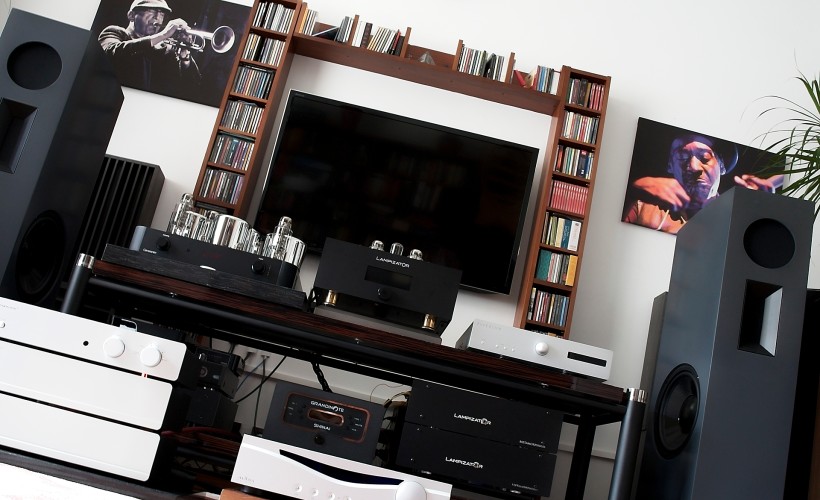 When Micheal came to my place, apart from Struss amplifier we also used my 300B SET integrated, the (modified) Art Audio Symphony II. We had no way to deliver signal for bass woofers so for a while we listened only to mid-woofers and tweeters playing music for us. And it was still a beautiful, coherent experience, amazingly colorful, resolving, rich, open and smooth. The lower bass was missing, but we didn’t really pay too much attention to it because of how silky smooth the 300B mids and sopranos were, how impressive even the low-level resolution was. This short session proved how well these speakers were tuned – we cut out bass almost completely and they still sounded good, consistent. Also, it was the second (after Struss DM-250) hint regarding how much Pirols had to offer even with amplifiers that cost only a fraction of their asking price. You surely don’t need high output to drive them, just a well-balanced, accurate, resolving and as refined amp as possible that offers sound that you like. Pirols will make most of it, most likely elevating the amp’s performance to a new level.
When Micheal came to my place, apart from Struss amplifier we also used my 300B SET integrated, the (modified) Art Audio Symphony II. We had no way to deliver signal for bass woofers so for a while we listened only to mid-woofers and tweeters playing music for us. And it was still a beautiful, coherent experience, amazingly colorful, resolving, rich, open and smooth. The lower bass was missing, but we didn’t really pay too much attention to it because of how silky smooth the 300B mids and sopranos were, how impressive even the low-level resolution was. This short session proved how well these speakers were tuned – we cut out bass almost completely and they still sounded good, consistent. Also, it was the second (after Struss DM-250) hint regarding how much Pirols had to offer even with amplifiers that cost only a fraction of their asking price. You surely don’t need high output to drive them, just a well-balanced, accurate, resolving and as refined amp as possible that offers sound that you like. Pirols will make most of it, most likely elevating the amp’s performance to a new level.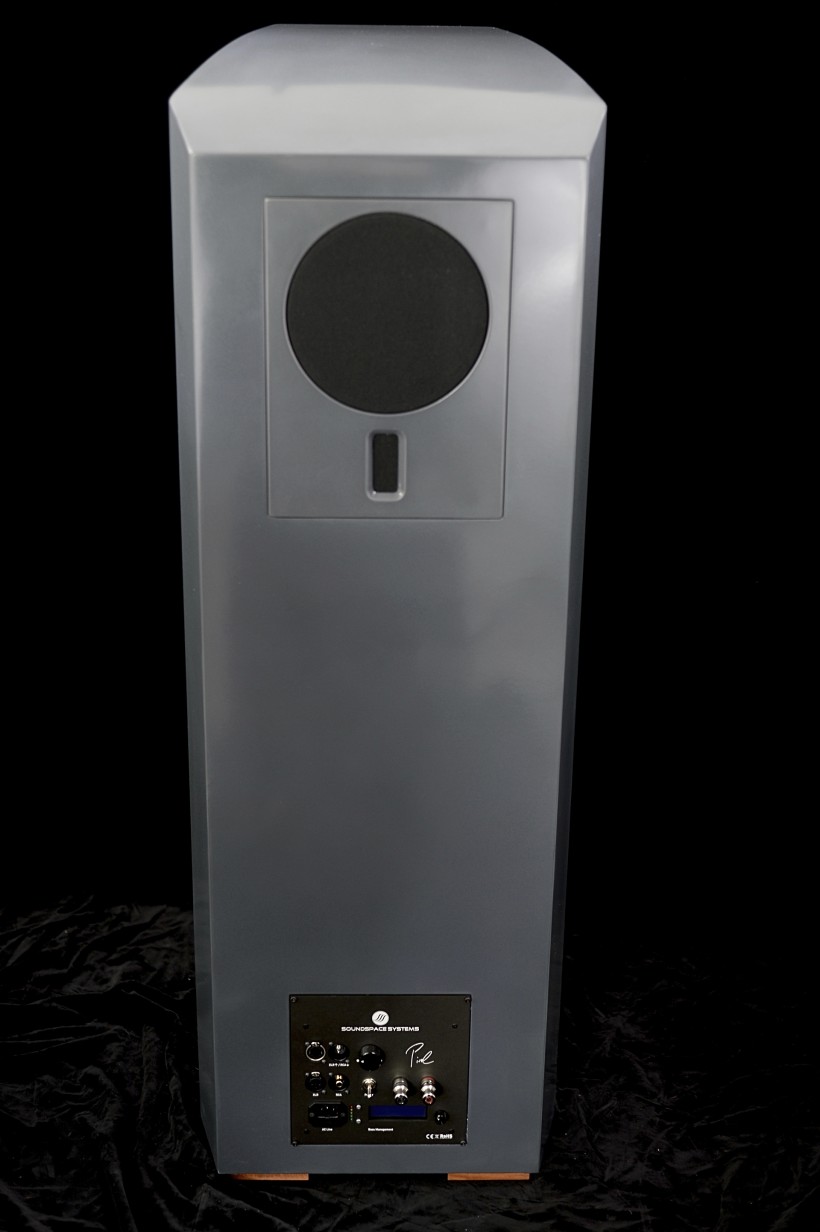 Obviously using an amplifier without a pre-out wasn’t a real-life situation, but it proved, that, due to high sensitivity and active bass module, Pirols could actually be combined also with some low-output SET amplifiers, preferably with pre-out, or alternatively with a set of separates with pre and power amp. I was pretty sure that such system would yield tremendous results. As some of you know, I am a SET aficionado. So any speakers that perform well with my 300B or other single ended triode amplifiers delivering a full-range sound are my best friends right from the start. That’s why I requested the latest Ayon Audio Crossfire EVO integrated (featuring a pre-out) from the Polish distributor, Nautilus, for a review and to marry it with Pirols. It’s been one of my favorite amps ever since its first version was introduced some 10 years ago or so. EVO is the fourth iteration, supposedly the best one yet. There were some significant changes made to its design but it still features the 62B (more powerful 300B cousins) triodes in the output capable of delivering 30W per channel. Crossfire evolved from version to version not only in terms of overall performance level, but also towards more neutral (less warm) sounding amp. Yet, it still does offer a wonderfully rich, colorful, palpable, smooth midrange and crystal clear, crisp, open, yet smooth and rich treble. That’s what made it such a great match for Pirols as numerous albums I played using this setup proved beyond a doubt.
Obviously using an amplifier without a pre-out wasn’t a real-life situation, but it proved, that, due to high sensitivity and active bass module, Pirols could actually be combined also with some low-output SET amplifiers, preferably with pre-out, or alternatively with a set of separates with pre and power amp. I was pretty sure that such system would yield tremendous results. As some of you know, I am a SET aficionado. So any speakers that perform well with my 300B or other single ended triode amplifiers delivering a full-range sound are my best friends right from the start. That’s why I requested the latest Ayon Audio Crossfire EVO integrated (featuring a pre-out) from the Polish distributor, Nautilus, for a review and to marry it with Pirols. It’s been one of my favorite amps ever since its first version was introduced some 10 years ago or so. EVO is the fourth iteration, supposedly the best one yet. There were some significant changes made to its design but it still features the 62B (more powerful 300B cousins) triodes in the output capable of delivering 30W per channel. Crossfire evolved from version to version not only in terms of overall performance level, but also towards more neutral (less warm) sounding amp. Yet, it still does offer a wonderfully rich, colorful, palpable, smooth midrange and crystal clear, crisp, open, yet smooth and rich treble. That’s what made it such a great match for Pirols as numerous albums I played using this setup proved beyond a doubt.
As some of you are surely aware, Mr. Kazuo Kiuchi, the man behind Combak Corporation, started a while ago to release also vinyl records under Harmonix Master Sound label. The latest title, originally released by Three Blind Mice, was „The Boss” by Seiichi Nakamura Quintet +2. That’s a wonderful live album recorded in 1974 and it was one of the first I dropped the stylus on when listening to Ayon – Pirol system. As I’ve already mentioned, Pirols perform remarkably well regardless of volume level. They can effortlessly handle even highest levels, but also offer a rich, highly resolving performance when playing on (almost) whisper level. This particular live performance dared me to push the volume way up and so I did. The texture, timbre, every tiniest detail and natural flow of the saxophone’s (and accompanying instruments) performance were simply mesmerizing. Maybe even hypnotizing as I kept pushing the volume up to a level that was comparable to me sitting in the first row there in the Nihon Toshi Center Hall. Yes, my neighbors hated me for that, but other than that I noticed zero negative effects of playing crazy loud. No distortion, no compression, just as relaxed, effortless, smooth and accurate presentation as on normal levels. Even the noise that came from the tape used in the recording blended in with the whole performance perfectly so even though it was there it didn’t bother me at all, it was just a part of the spectacle. Pirols presented the recording in a very realistic way, benefiting also from all acoustic clues included in it. They rendered a large soundstage, left to right and front to back, that started on the line between speakers. They filled it generously with air that allowed instruments to truly breathe and offered a feeling of a unique ambiance of the place. Large, tangible phantom images, that, as you may remember, I missed a bit when listening in Berlin, in my room were yet another advantage of Michael’s speakers that made this performance seem even more realistic. Very quickly listening to the music turned into experiencing a unique musical event from up close. I love being sucked into the performance, becoming part of it, as a passive participant obviously, but still it is so much more personal then just listening to the music being played by a „regular” audio system. That’s what, in my experience, mostly the top tier components have to offer. Yup, that’s exactly where Pirols belong!
Pirols presented the recording in a very realistic way, benefiting also from all acoustic clues included in it. They rendered a large soundstage, left to right and front to back, that started on the line between speakers. They filled it generously with air that allowed instruments to truly breathe and offered a feeling of a unique ambiance of the place. Large, tangible phantom images, that, as you may remember, I missed a bit when listening in Berlin, in my room were yet another advantage of Michael’s speakers that made this performance seem even more realistic. Very quickly listening to the music turned into experiencing a unique musical event from up close. I love being sucked into the performance, becoming part of it, as a passive participant obviously, but still it is so much more personal then just listening to the music being played by a „regular” audio system. That’s what, in my experience, mostly the top tier components have to offer. Yup, that’s exactly where Pirols belong!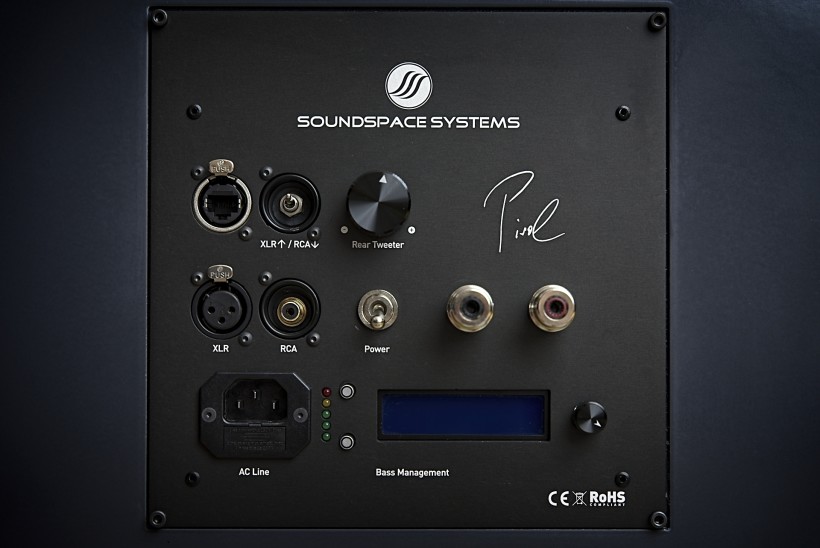 „The Boss” was followed by numerous live performances, including the legendary „Jazz at the Pawnshop” or „Special 33” by Blicher Hemmer and Gadd, „Live at Checkerboard Lounge” with Muddy Waters and Rolling Stones, or another classic „Friday night in San Francisco”, to name a few. The more live albums I listened to the more convinced I was, that Pirols must have been developed with live music (recordings, obviously) in mind. Michael told me that he goes to various concerts regularly so he knows the sound of live music and it seemed obvious when listening to Pirols. Apart from accurately conveying all the sonic features audiophiles always get so excited about, they were also able to deliver a proper level of energy. This energy is not just about dynamics, or bass slam. What I am talking about is the single feature that most clearly distincts live music from recorded one. One that allows you to tell right away which one you’re listening to. It is just the way it is – during recording and than also re-play processes music looses a lot of its original energy. Some audio components are clearly better in retrieving (part of) it than others and Pirols excel in this regard. And that’s another reason why their performance is so believable, so immersive, so highly enjoyable.
„The Boss” was followed by numerous live performances, including the legendary „Jazz at the Pawnshop” or „Special 33” by Blicher Hemmer and Gadd, „Live at Checkerboard Lounge” with Muddy Waters and Rolling Stones, or another classic „Friday night in San Francisco”, to name a few. The more live albums I listened to the more convinced I was, that Pirols must have been developed with live music (recordings, obviously) in mind. Michael told me that he goes to various concerts regularly so he knows the sound of live music and it seemed obvious when listening to Pirols. Apart from accurately conveying all the sonic features audiophiles always get so excited about, they were also able to deliver a proper level of energy. This energy is not just about dynamics, or bass slam. What I am talking about is the single feature that most clearly distincts live music from recorded one. One that allows you to tell right away which one you’re listening to. It is just the way it is – during recording and than also re-play processes music looses a lot of its original energy. Some audio components are clearly better in retrieving (part of) it than others and Pirols excel in this regard. And that’s another reason why their performance is so believable, so immersive, so highly enjoyable.
Over the course of this review I listened to Pirols paired also with several other amplifiers, such as, for example a third iteration of the well-known Bladelius Tyr. That’s a classic solid-state integrated with 125 W output. There were also separate sets with my AudiaFlight FLS1 preamplifier and the new LampizatOr Metamorphosis hybrid monoblocks, or top solid-state ones from Exposure 5010 series. There were also some others, but that’s beyond the point. There was actually one key lesson to be learned from all those setups, namely that Pirols don’t really care… I mean, about the technology behind amplifiers. What does matter is their performance. Because the more refined the partners, the more Pirols are able to spread their wings. They will offer a highly enjoyable performance even with good inexpensive amplifiers, but they are more than capable to utilize all the qualities of the best sources and amplifiers you hook them up with to deliver remarkably natural, totally engaging performance. As a tube aficionado I did like a bit more the cases when some tubes (other then in my Pacific DAC or one of the phonostages) were involved, but that’s just me. Tubes, for me, give the sound sort of a „human touch” and Pirols are perfectly capable of utilizing that. That being a mix of a bit of warmth, smoothness, richness, openness, even some natural softness combined together in the right proportions to make recordings sound more like live music. You will get equally impressive, although slightly different in terms of sonic character performances also with solid-state or hybrid designs, and you may even like these better. It does say a lot about the SoundSpace Systems Pirols as being not only top performers but also amazingly versatile speakers that will be a good match for almost any, although preferably high end, system and any sonic and musical preferences.
As a tube aficionado I did like a bit more the cases when some tubes (other then in my Pacific DAC or one of the phonostages) were involved, but that’s just me. Tubes, for me, give the sound sort of a „human touch” and Pirols are perfectly capable of utilizing that. That being a mix of a bit of warmth, smoothness, richness, openness, even some natural softness combined together in the right proportions to make recordings sound more like live music. You will get equally impressive, although slightly different in terms of sonic character performances also with solid-state or hybrid designs, and you may even like these better. It does say a lot about the SoundSpace Systems Pirols as being not only top performers but also amazingly versatile speakers that will be a good match for almost any, although preferably high end, system and any sonic and musical preferences.
Summary
As you’ve probably noticed I didn’t go through with a standard checklist of the qualities we value so much as audiophiles. Why? The answer is simple – when it comes to the top components, speakers, amplifiers, sources and so on, individual sonic qualities don’t matter anymore. First of all you can’t really offer, say, speakers costing more than 50 kEUR that don’t check all the boxes. That’s a must, a starting point for true high end and Pirols are no exception – you will get it all with them, at top level, but what really matters starts beyond it. Simply because at this level it’s not about bass, treble, midrange, timing, space, resolutions and so on anymore. Once you set Pirols up properly and start listening you will forget about all these now irrelevant sonic features and focus on music, on how it makes you feel, how immersive, personal and unique the experience gets. Whatever music genre is your favorite, whatever mood you’re in, whether you need to relax or fill like dancing, Pirols will be there for you. They’ll offer you a gentle, relaxing musical massage after a hard day at work, or a „pick me up” instead of (or along with) an espresso or glass of favorite wine when you need a refill of energy. These are not the best speakers in the world, after all there is also Aidoni model, but they may be a first choice for those who simply love the music, for whom it is an important part of life. But be ware! They are addictive – once you try them you may not want to let them go anymore.
With a great pleasure I’d like to award Pirols with a fully deserved Victor!
Technical specification (according to manufacturer):
- System: 3-way
- Power rating: 100/300 W
- Frequency range: 20-35000 Hz
- Impedance: 8Ω nominal, 4Ω minimum
- Efficiency: 97 db/W/m
- Dimensions (HxWxD): 124 x 44 x 48 cm
- Weight: 95-140 kg per speaker (depending on the base and cabinet material)
Price (when reviewed):
- Pirol Basic version: 49.800 EUR
- Reviewed version (Basic plus Silver option 7800 EUR): 57600 EUR
- Optional finishes: High Gloss: +3,800 EUR, Solid Timber1 (i.e., maple, oak, bamboo, cherry): +19,000 EUR, Solid Timber 2 (i.d. African Teak): +29,000 EUR
- Optional Bronze base: +4000 EUR
Manufacturer: SoundSpace Systems
Associated equipment:
- Analogue front end: J.Sikora Standard MAX turntable, J.Sikora KV12 tonearm , AirTight PC-3, phonostages: Grandinote Celio mk IV, ESE Lab Nibiru V 2.5
- Digital source: a passive, custom PC with WIN10, Roon, Fidelizer Pro 7.3, JCat USB Femto card with iFi power supply, Hdplex linear power supply for PC, JCAT USB Isolator
- D/A Converter: LampizatOr Golden Atlantic +Ideon Audio 3R Master Time (USB signal regenerator), LampizatOr Pacific
- Power amplifiers: GrandiNote Shinai, Art Audio Symphony II (modified), LampizatOr Metamorphosis, Struss Audio DM-250
- Preamplifier: Audia Flight FLS1
- Loudspeakers: Ubiq Audio Model ONE Duelund Edition. GrandiNote MACH4
- Interconnects: Hijiri Million, Less Loss Anchorwave, KBL Sound Zodiac XLR, TelluriumQ Silver Diamond USB
- Speaker cables: LessLoss Anchorwave
- Power cables:LessLoss DFPC Signature, Gigawatt LC-3
- Power:Gigawatt PF-2 MK2 and Gigawatt PC-3 SE Evo+; a custom power line with Gigawatt LC-Y in-wall cable; Gigawatt G-044 Schuko and Furutech FT-SWS-D (R)
- Racks: Base VI, Rogoz Audio 3RP3/BBS
- Anti-vibration accessories: ROGOZ-AUDIO SMO40 and CPPB16 platforms and ROGOZ AUDIO BW40MKII feet, Franc Accessories Ceramic Disc Slim Feet and Wood Block Platform


